Fontainebleau, a hidden gem not far from Paris, stands as one of France’s most magnificent royal palaces. More than just a stunning architectural marvel, it’s a historical testament, bearing witness to significant moments of French royalty. If you’re dreaming of exploring Fontainebleau, join us as we unveil the secrets of this palace and equip you with essential travel tips for a truly fulfilling journey.
Exploring Fontainebleau: A Tapestry of History and Renaissance Architecture
Fontainebleau Palace, or Château de Fontainebleau, is located approximately 60km southeast of Paris. With nearly 900 years of history, it has served as a residence for 34 kings and 2 emperors of France. Beyond its architectural grandeur, Fontainebleau symbolizes power, opulence, and the historical shifts of France.
From 1137 onwards, the palace underwent numerous expansions and renovations, notably under King Francis I in 1528. This king transformed Fontainebleau into a masterpiece of Italian Renaissance architecture, giving it a striking and lavish new appearance.
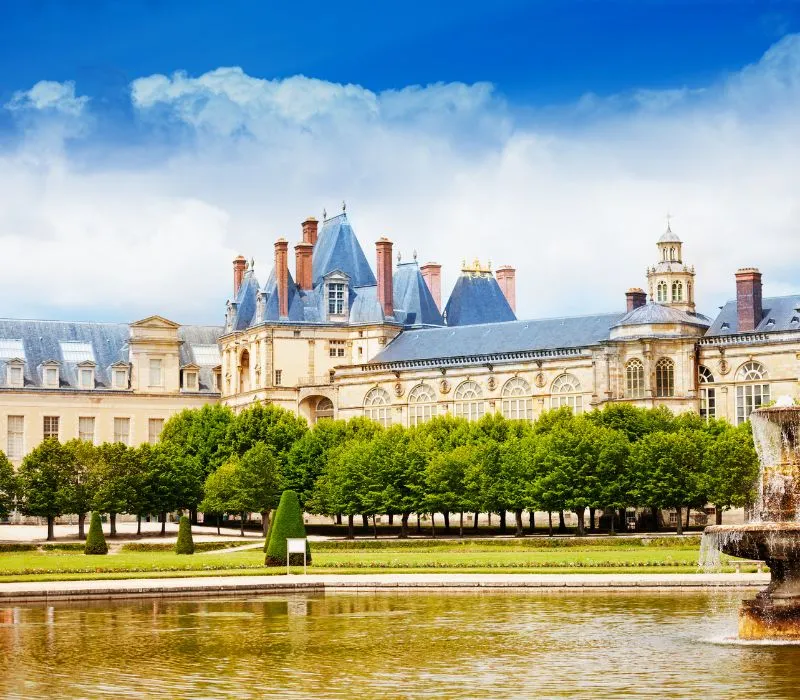
Fontainebleau is not only a beautiful architectural structure but also a living museum of French history. It witnessed the birth of King Louis XIII, served as a refuge for King Louis XVI and Queen Marie Antoinette during the French Revolution, and later became a royal palace for Emperor Napoleon Bonaparte.
Visiting Fontainebleau allows you to admire Napoleon’s only remaining throne room, explore Marie Antoinette’s Turkish boudoir, marvel at the famous horseshoe staircase, and discover the François I Gallery with its breathtaking frescoes.
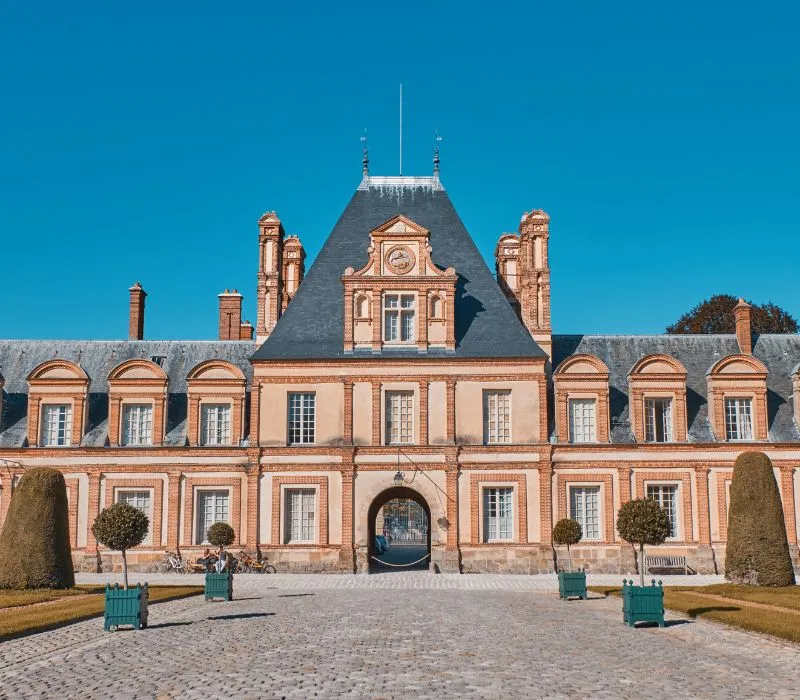
Beyond its unique architecture and historical significance, Fontainebleau is surrounded by stunning gardens, serene lakes, and exquisite sculptures. Although located further from the center of Paris than the Louvre or Versailles, Fontainebleau remains an unmissable destination for those seeking a deep understanding of French culture and history across various eras.
Getting to Fontainebleau: Transportation Guide
There are several ways to travel from Paris to Fontainebleau Palace. Here are some suggestions from Du lịch khắp thế gian (Travel the World):
- Train and Bus: This is the most popular and budget-friendly option. From Gare de Lyon station in Paris, take the RER Line R train towards Fontainebleau-Avon. The journey takes about 40 minutes. Upon arriving at Fontainebleau-Avon station, take bus number 1 to the “Fontainebleau Bibliothèque” stop, which is a 3-minute walk from the palace’s main entrance. Consider purchasing a Mobilis pass for unlimited travel on both trains and buses for the day.
- Bicycle: If you enjoy exploration and exercise, rent a bicycle and cycle from Paris to Fontainebleau. This route will take you through peaceful countryside and lush forests. The cycling journey takes approximately 3-4 hours.
- Taxi or Private Car: For comfort and privacy, a taxi or private car is a suitable choice. However, it will be more expensive than public transport. The taxi journey from central Paris to Fontainebleau takes about 1 hour.
Purchasing Tickets to Fontainebleau Palace
To ensure a smooth visit, it is advisable to purchase tickets in advance. Tickets can be bought online on the official palace website or through online travel platforms like GetYourGuide for “skip-the-line” access, saving you waiting time.
The entrance fee for adults is approximately €13. Admission is free for children under 18 years old. Notably, on the first Sunday of each month (excluding July and August), palace entry is free.
The palace is open daily, except on Tuesdays and public holidays such as January 1st, May 1st, and December 25th.
Must-See Attractions at Fontainebleau
Fontainebleau offers numerous captivating attractions, each with its unique beauty and story. Here are some highlights you shouldn’t miss:
Napoleon I Museum
The Napoleon I Museum showcases artifacts related to the life and career of Emperor Napoleon Bonaparte. You can admire a collection of exquisite porcelain, luxurious furniture, and family portraits. This is an opportunity to gain deeper insights into French history during Napoleon’s era.
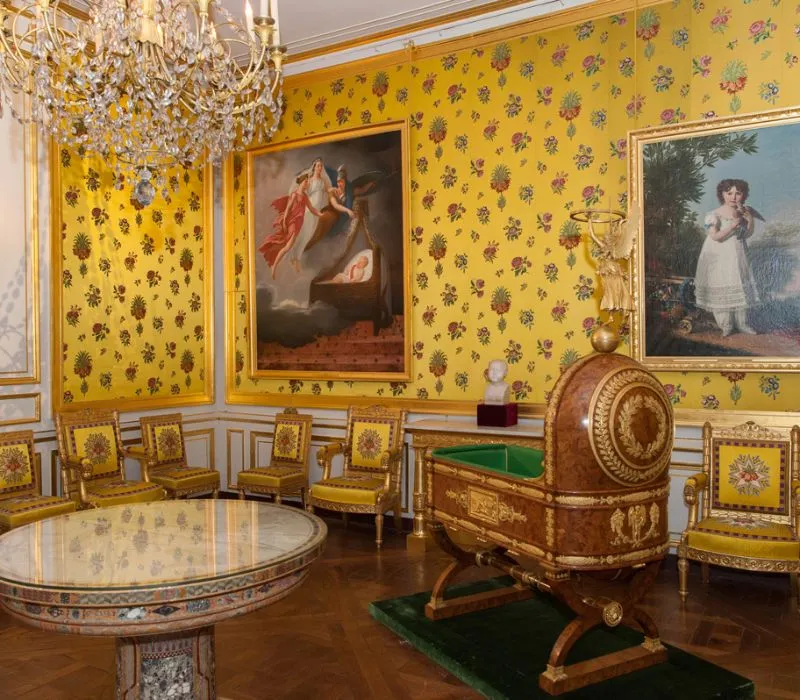
Francis I Gallery
The Francis I Gallery is a masterpiece of French Renaissance art, designed by Florentine artist Rosso Fiorentino. This gallery is distinguished by its elaborate decorations and refined artworks, reflecting the opulence and sophistication of Francis I’s reign.
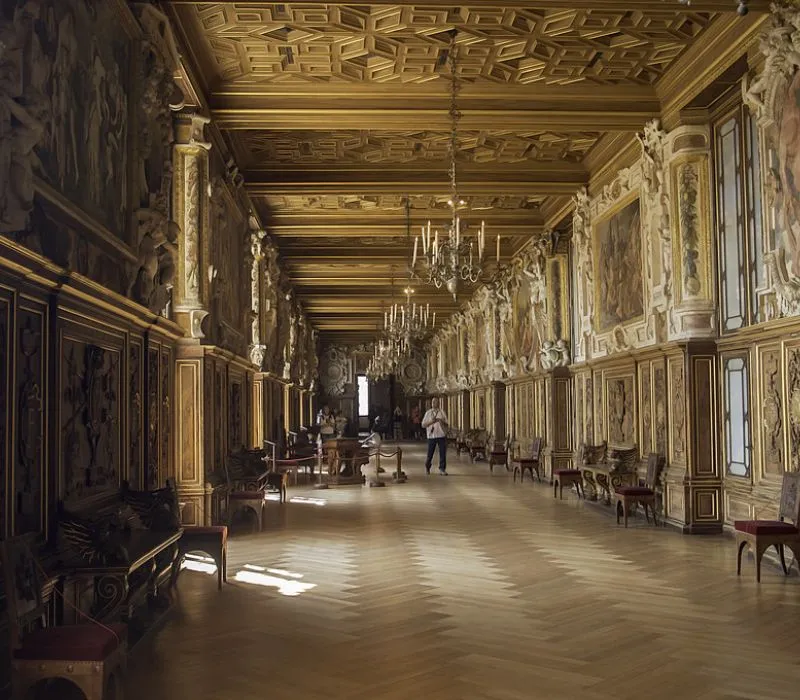
Ballroom
The Ballroom is one of the most magnificent spaces in the palace. Adorned with frescoes by Italian artist Nicolo Dell’Abbate, along with wooden paneling, bronze lamps, and large windows, the Ballroom offers a lavish and grand setting where royal balls once took place.
Royal Chapel of the Trinity
The Royal Chapel of the Trinity is a refined Baroque architectural work, where royal religious ceremonies were held. Be sure to explore both levels of the chapel to appreciate its unique architecture and the exquisite beauty of this sacred space.
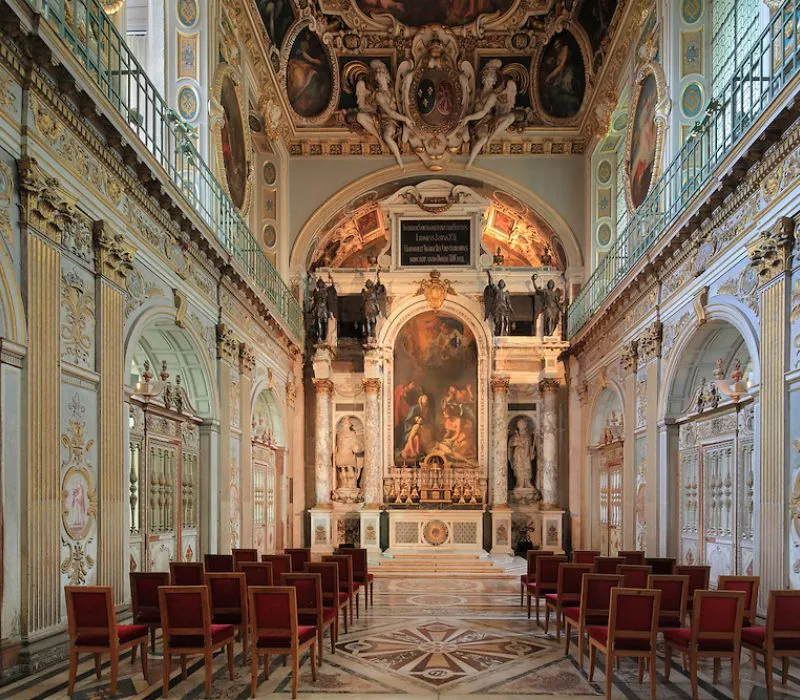
Napoleon’s Throne Room
The Throne Room is unique in France as the only palace to retain its original throne room intact. Lavishly decorated with gold details and royal furnishings, this room embodies the power and majesty of Emperor Napoleon.
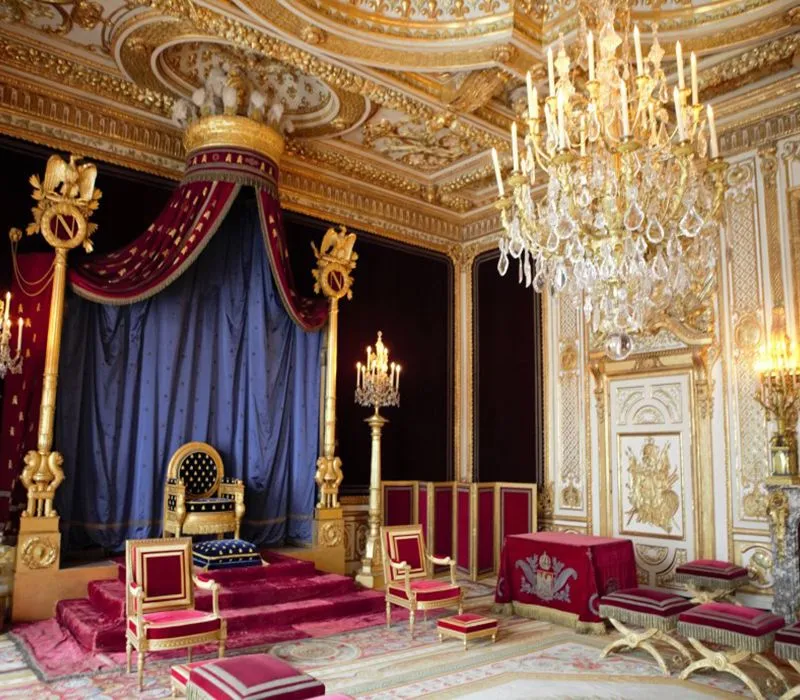
Royal Library
The Royal Library, located in the Diana Gallery, is a stunning space housing over 20,000 rare books. Although entry is not permitted, you can admire it from afar and appreciate the grandeur and invaluable collection it holds.
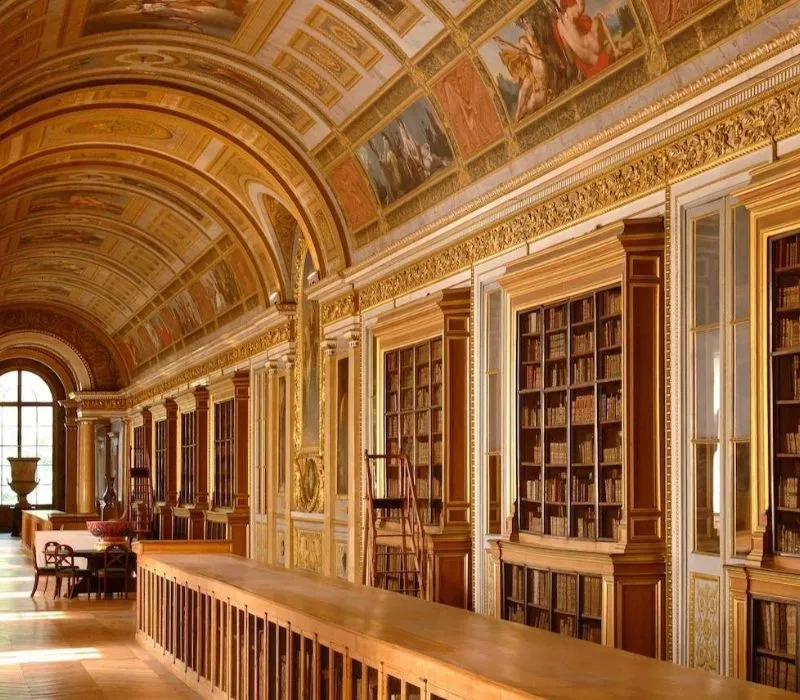
Gardens
Spanning 130 hectares, the gardens of Fontainebleau are an ideal place to relax and enjoy the fresh air. Stroll through gardens like the Grand Parterre, Diana Garden, English Garden, and the park surrounding the Grand Canal.
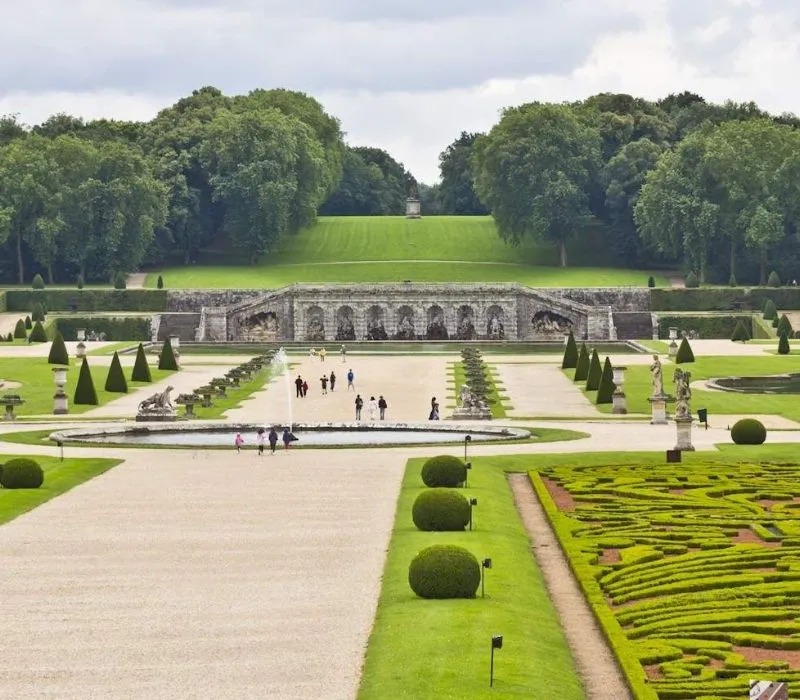
How Much Time to Spend at Fontainebleau?
To fully appreciate the beauty and history of Fontainebleau, you should allocate at least 5-7 hours, or ideally a whole day. Dedicate 2-3 hours to exploring the palace interiors, followed by a rest and light meal by the pond. For the remainder of your visit, wander through the exquisite gardens.
A visit to Fontainebleau is not just an opportunity to admire one of France’s most beautiful architectural landmarks, but also a journey to explore the rich history and culture of this country.
Conclusion
Fontainebleau, with its magnificent architecture, rich history, and stunning natural surroundings, rightfully deserves a place on your must-visit list when exploring France. We hope the information and tips shared by Du lịch khắp thế gian (Travel the World) will help you have a truly memorable and fulfilling trip. Are you ready for your journey to discover the royal palace of Fontainebleau?